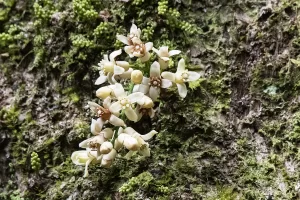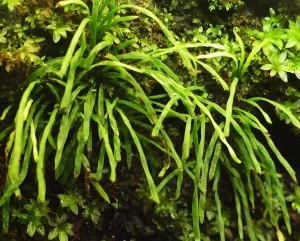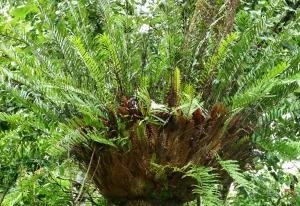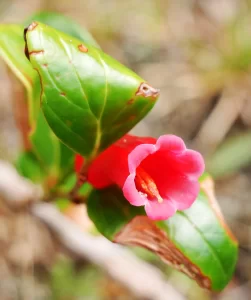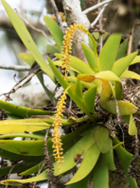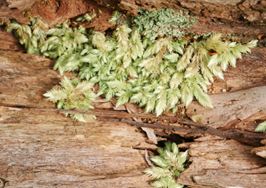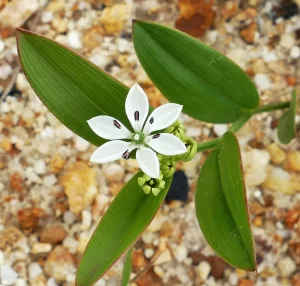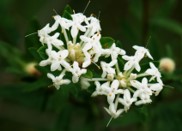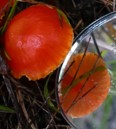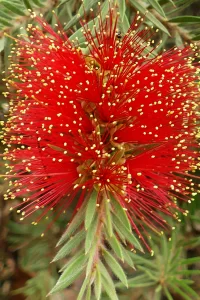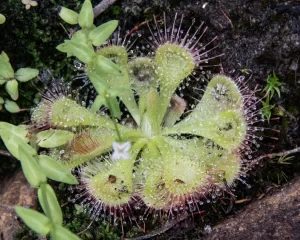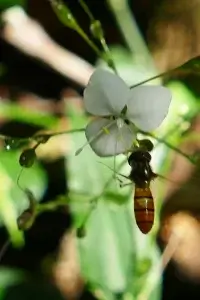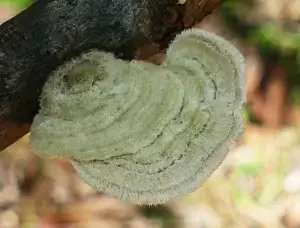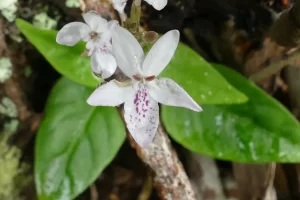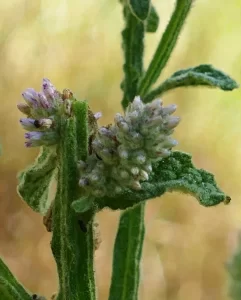

Newsletter 2, August 2024
Our travels earlier this year took us back to far north Queensland and south through Central Queensland and south through Central Queensland. The early months of the year are not the best time to visit as there is still a lot of rain happening. However, if you don’t mind being a bit of damp, there is a lot to see. The early months of the year are not the best time to visit as there is still a lot of rain happening. However, if you don’t mind being a bit of damp, there is a lot to see. We have a number of favourite places to stay on the Atherton Tableland, one being Bonadios near Yungaburra. This is a privately owned caravan park hidden behind the corn fields, on the banks of the Barron River which is home to a number of platypus. The green ring-tail possum (Pseudochirops archeri) is one of the many critters that love to drop in for a feed of fresh fruit of an evening. There is also a large family of red-legged pademelons (Thylogale stigmatica) which fight the brush turkeys for a snack.
Crater Lakes National Park
Bonadios is close to the Crater Lakes National Park which encompasses Lakes Barrine and Eacham and also the Curtain Fig Tree. The walking tracks around these lakes are home to a number of tropical plants and birds. On this visit I was lucky to briefly spot the musky ratkangaroo (Hypsiprymnodon moschatus) – but alas not long enough for a decent photo.
The vegetation is regarded as a Complex Mesophyll, vine forest. It has a high representation of plant species from the families Myrtaceae and Lauraceae. In simple terms it is a rainforest with a shady canopy of dense trees, misty dampness and humidity, vines, epiphytes, mosses, liverworts, and a moist layer of leaf litter. Of particular interest are the bumpy satinash and yellow mahogany, which are cauliflorous trees, meaning they bear flowers and fruit directly from the trunk.
Mt Hypipamee National Park
Also on the Atherton Tableland and home to Dinner Falls and the Mt Hypipamee Crater, which is a volcanic pipe 61 metres in diameter and 85 metres deep. It is a high altitude rainforest and temperatures can go as low as -10 degrees Celsius in winter. The headwaters of the Barron River form at Dinner Falls. The cauliflorous trees are also found here, namely the bumpy satinash. Also keep a look out for numerous fungi and mosses that grow in the moist forests.
Mt Lewis National Park
Located near Julatten, this park rises 1200 metres and is one of the best places to find the elusive Blue-faced Parrot-Finch. Unfortunately this bird has eluded us to date. We were unable to access the park this visit due to the bridge being out of commission as a result of flooding. However, previous visits have enabled us to observe a number of floral species. There is a great variety of ferns in the area but I particularly like the pouched coral fern and was impressed with the staghorn that was growing beside the path
Girringun National Park
Located near Ingham, it is home of the Wallaman Falls, the tallest permanent waterfall in Australia where Stony Creek (a tributary of the Herbert River) makes a sheer drop of 268m. At times, the mist created by the falls hitting the bottom is so extreme that the falls are unable to be seen. The drive to the falls is very scenic, passing through large areas of cane fields as well as the open eucalypt forest and dense rainforests of the park.
Blackdown Tableland National Park
The Blackdown Tableland lies in Central Queensland near the town of Dingo, 180km west of Rockhampton and 110km east of Emerald. It is a sandstone plateau rising 900 metres, with stunning views. The vegetation is mostly heathlands and dry eucalypt forests with moist pockets of ferns, mosses and orchids. There are a couple of species of bottlebrush and palm, that are endemic to the area and not found anywhere else.
Another great spot in this area is the Sapphire Wetlands (14 hectares) which provide 3.6km of gravel cycling and walking tracks. This freshwater wetlands is home to a range of flora and fauna.
Cania Gorge National Park
Cania Gorge is in the North Burnett Region near the town of Monto. It falls within a large natural region known as the Brigalow Belt. More than 150 different types of plant communities are found in this region, including brigalow forest, eucalypt woodland, cypress pine woodland, dry rainforest and grassland. Whiptail wallabies graze in mobs of up to fifty during the day or night, particularly in the dam surrounds. There are numerous walking tracks where you will encounter local wildlife. We spotted a number of red-bellied black snakes on our treks. Many of the local wildflowers can be spotted along these tracks. The silver elkhorn can be found on the fern tree pool track. These plants are able to grow on cliff faces as their fronds are covered in fine, silky hairs that help prevent moisture loss. The centres of the plants have spongy leaf nests that form a type of moisture-retaining peat.
If you are out there making a mile, happy and safe travels. We are also now on Facebook and Instagram. Always happy to talk about flowers you may have seen, trying to identify or are on the look out for. Looking forward to hearing from you or maybe even encountering you out there as we look around Australia. Don’t forget you can email us at thenomadsbotanist@outlook.com
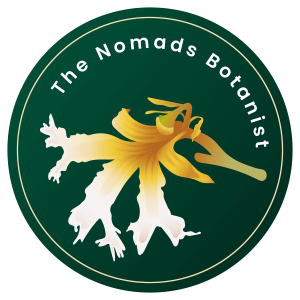
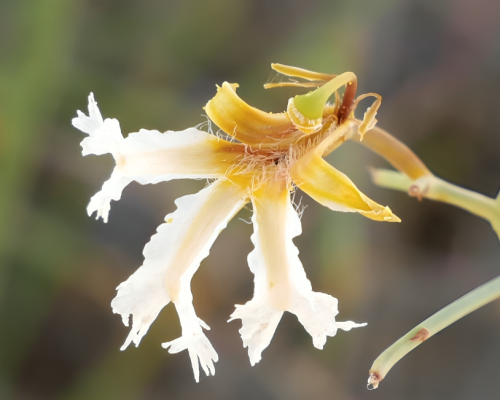

We hope you have enjoyed this short journey
through Australia’s landscapes. If you have any
comments or questions, we would love to hear
from you at thenomadsbotanist@outlook.com

Welcome to our very new webpage. It is so exciting to finally see this part of our travels in print, electronically speaking.
So went many happy and also frustrating hours, on line and in books, looking for a name or a clue as to what they were. In some instances I resorted to pestering anyone I thought might be able to help. To these people I say a big thank you as in the main they were extremely courteous and helpful.
The Nomads Botanist is the result of my efforts.
This has entailed naming, editing and sorting through many thousands of photographs and attempting to arrange them in a way that will assist you with a name at the least, allowing you to investigate further if required. The photos are what we have taken. Some are not great but they allow you to see the flower and maybe match it to your sighting. Hopefully the photography has improved a bit along the way
We are aware that we may not get everything right the first time and the website will be constantly updated and reviewed as time goes by, including the uploading of further snaps as we continue our travels. We hope it is of assistance to you and look forward to maybe meeting you in the back of beyond as we all check out this amazing country we call home.
State Folders
We are aware that we may not get everything right the first time and the website will be constantly updated and reviewed as time goes by, including the uploading of further snaps as we continue our travels. We hope it is of assistance to you and look forward to maybe meeting you in the back of beyond as we all check out this amazing country we call home.
New South Wales, Mount MacKenzie



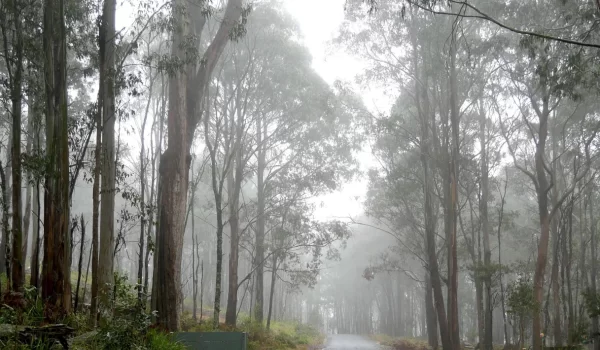
Northern Territory, Chambers Pillar
We have also discovered that some of the grasses found here are very interesting in their own right, with many varied and interesting seeding displays e.g. Triraphis mollis and Eriachne aristidea. One of my favourite plants, Polycalymma stuartii (poached egg daisy), is an everlasting daisy and they provide quite a show. In these areas there are a number of varieties of Ptilotus or mulla mulla and members of the Chenopod family which includes Maireana (bluebush) and the very interesting Sclerolaena (prickle bushes). Unsurprisingly, the main grass species is Triodia (spinifex).
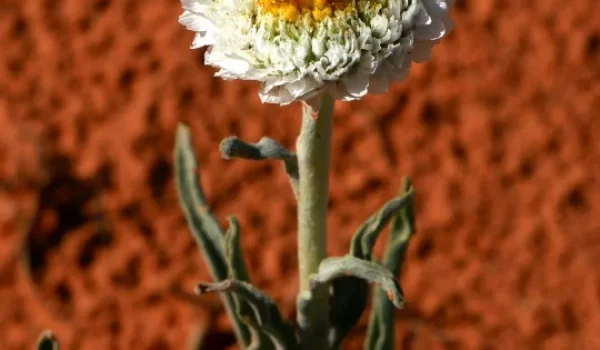
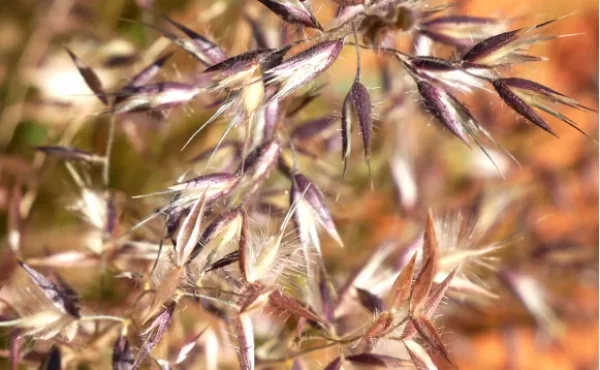
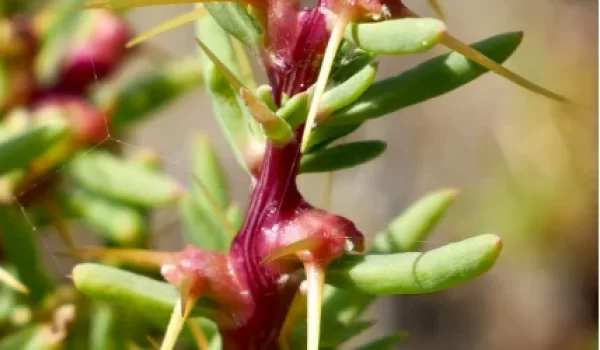
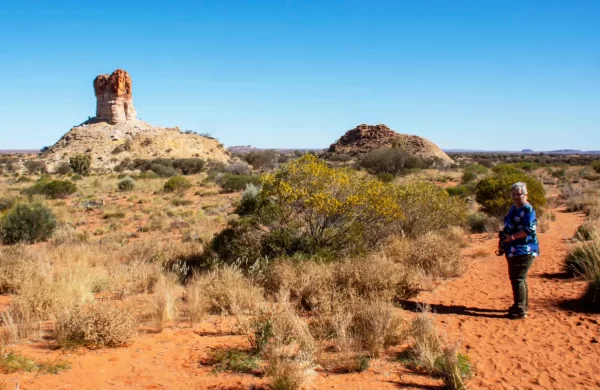
Queensland, Keating's Lagoon, Cooktown
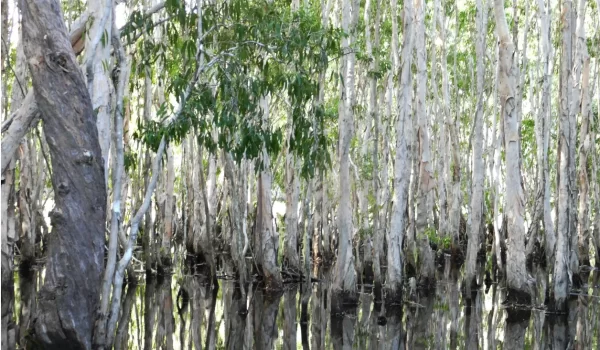

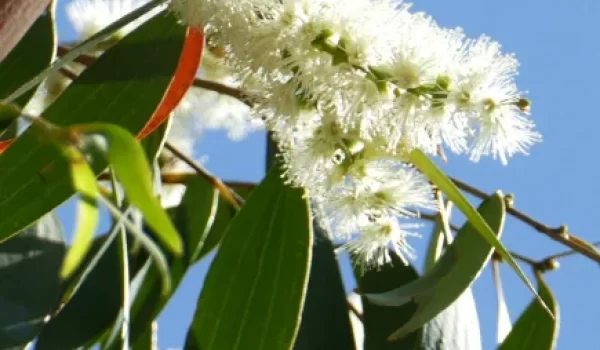

South Australia, Gluepot Reserve
The flowering plant life found here is varied and complex, with small quick flowering plants taking advantage of rain to longer lasting flowering saltbush and other shrub and brush varieties. We have spent many a happy and interesting hour, wandering through these areas, seeing what there is to discover. Lots of chenopods - Dissocarpus paradoxus (cannonball) and Maireana, (blue bush); acacia and the unusual Pimelea trichostachya (spiked riceflower). It was while looking down at these great plants, that I found myself lost in the mallee woodland.
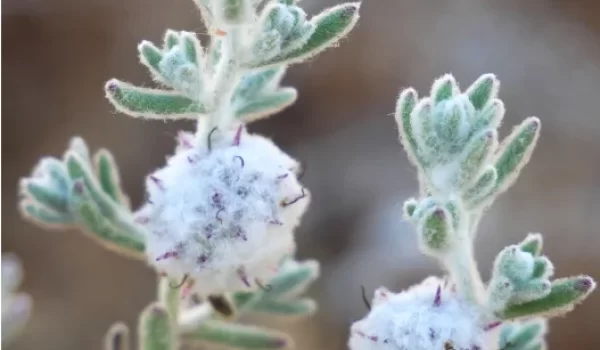

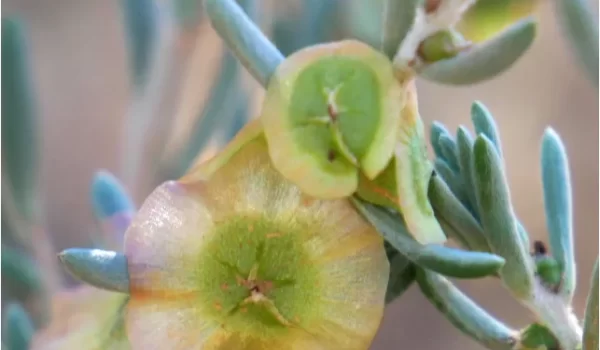

Tasmania, Blue Tier
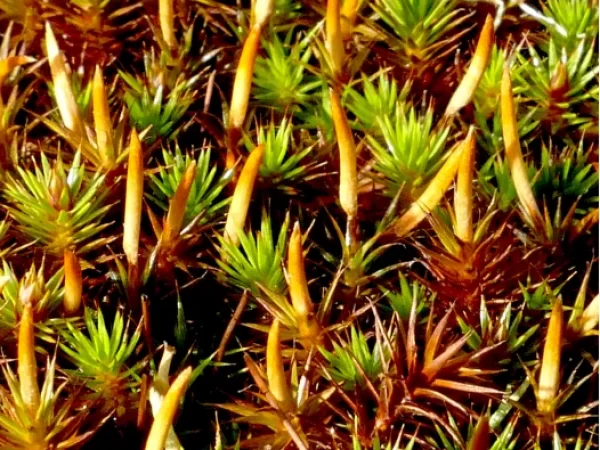



Victoria, Murray Sunset National Park
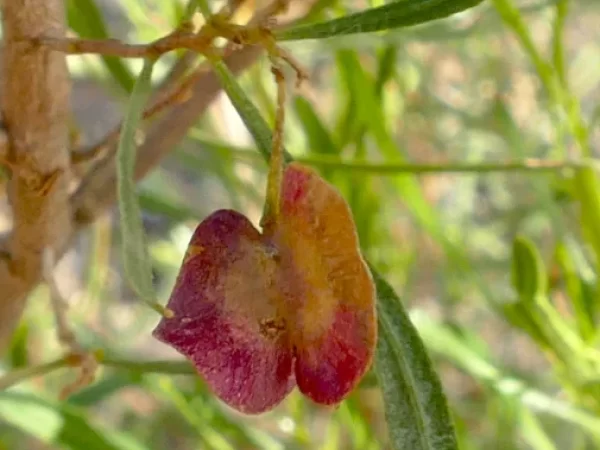
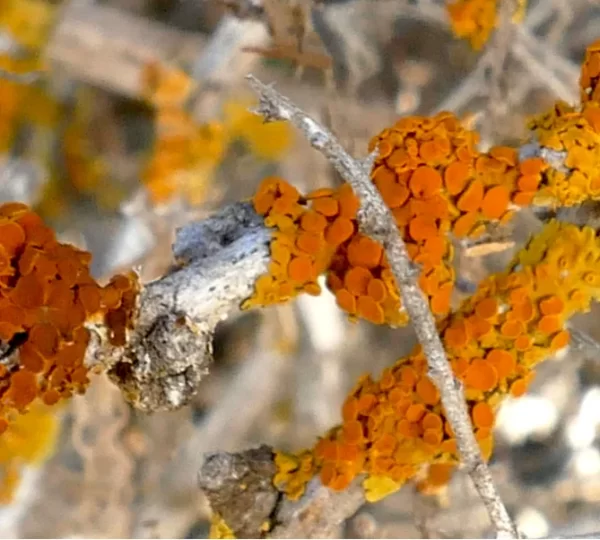
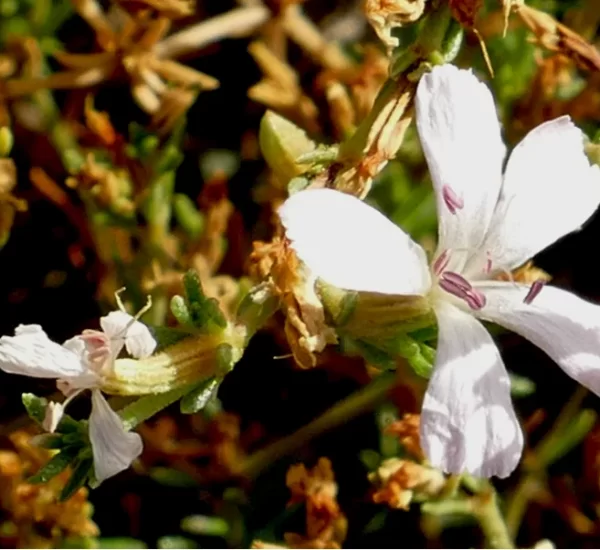
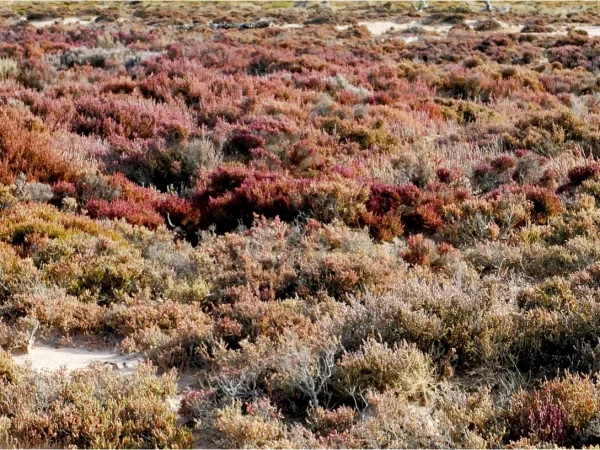
Western Australia, Morawa
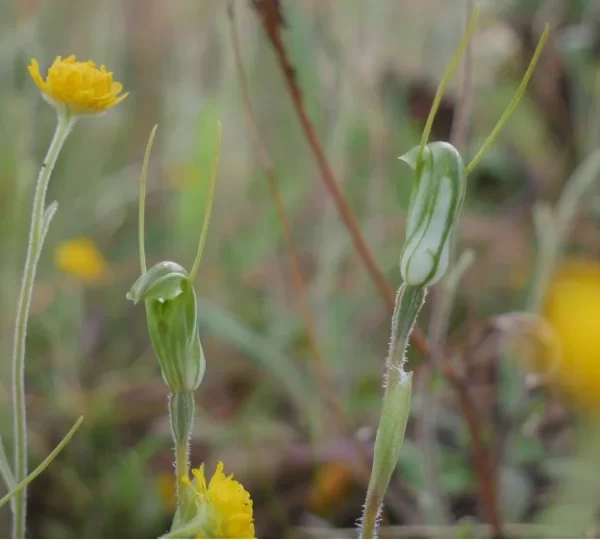

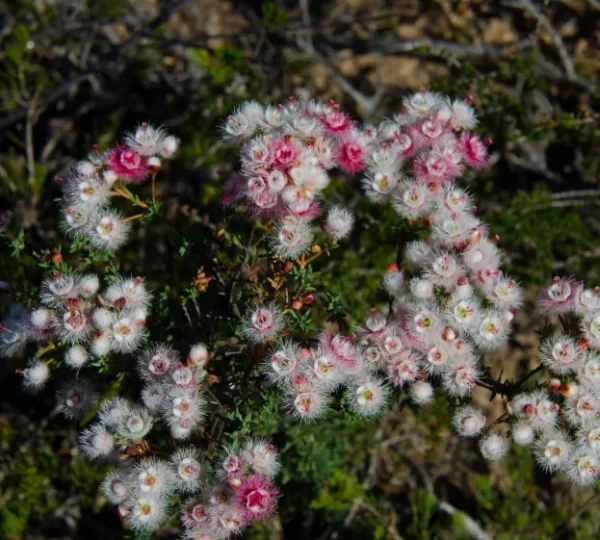
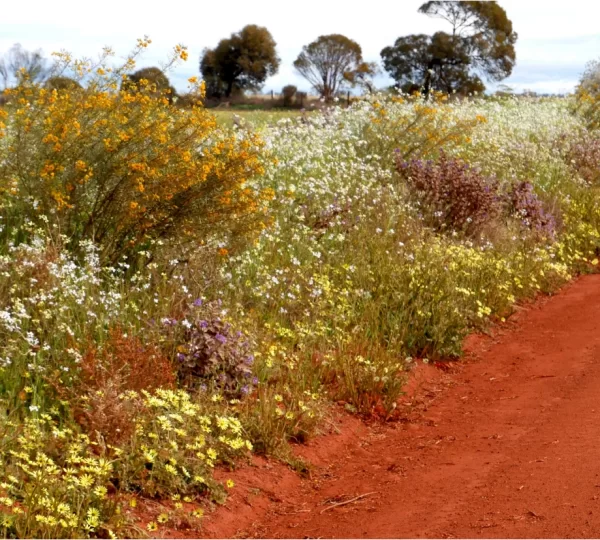
Plant Spotlight


We hope you have enjoyed this short journey
through Australia’s landscapes. If you have any
comments or questions, we would love to hear
from you at thenomadsbotanist@outlook.com



